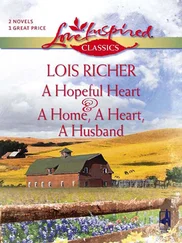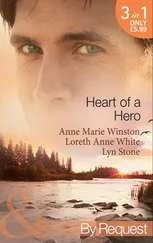Incredible and heartwarming stories
from the woman who talks with animals
Heart to Heart
PEA HORSLEY
HarperElement
An Imprint of HarperCollins Publishers 1 London Bridge Street London SE1 9GF
www.harpercollins.co.uk
First published by HarperElement 2010
© Pea Horsley 2010
Pea Horsley asserts the moral right to be identified as the author of this work
A catalogue record of this book is available from the British Library
While every effort has been made to trace the owners of copyright material reproduced herein and secure permissions, the publishers would like to apologise for any omissions and will be pleased to incorporate missing acknowledgements in any future edition of this book.
All rights reserved under International and Pan-American Copyright Conventions. By payment of the required fees, you have been granted the nonexclusive, nontransferable right to access and read the text of this e-book on-screen. No part of this text may be reproduced, transmitted, downloaded, decompiled, reverse engineered, or stored in or introduced into any information storage and retrieval system, in any form or by any means, whether electronic or mechanical, now known or hereinafter invented, without the express written permission of HarperCollins e-books.
HarperCollinsPublishers has made every reasonable effort to ensure that any picture content and written content in this ebook has been included or removed in accordance with the contractual and technological constraints in operation at the time of publication.
Source ISBN: 9780007326600
Ebook Edition © DECEMBER 2012 ISBN 9780007516186
Version:2015-06-22
This book is dedicated to Morgan, a pure-bred
mutt of questionable beagle heritage.
He changed my life.
Now he may change yours.

Cover
Title Page
Copyright
Dedication
Foreword
Introduction
1. Intuition Ignited
2. Practice, Practice, Practice
3. The Texas Ranger
4. Finding Conviction
5. Opening the Door of Opportunity
6. Synchronicity Calls Again
7. Animals Have Souls
8. Malteser Musgo
9. Empowering Animals
10. Balance Matters
11. Lucy Goosey
12. The Well-Mannered Guest
13. Spanish Explorer Joey
14. Sabre-Toothed Stewart
15. ‘The Doggie Guide to Stardom’
16. Tracking ‘Miracle’ Alfie
17. King Curtis and Big Love
18. Love
Afterword
Acknowledgements
About the Author
Author’s Note
About the Publisher

FOR AS LONG as I can remember I have wanted to work with animals. So when I stepped out of the Royal Veterinary College, London, in the dim and distant days of 1973, a qualified veterinary surgeon, I had already realized my life’s ambition. I had trained for five years, I had letters after my name and I thought I could cure every pet of every disease under the sun. Little did I know that the real learning process was only just beginning.
Within a few years I had become reasonably proficient at the mechanics of being a vet. I could carry out all but the most intricate operations efficiently and speedily, I could prescribe drugs, I could diagnose as well as anybody else. But I began to feel something was missing. There were patients that simply couldn’t be diagnosed, despite exhaustive investigations, there were patients for whom drugs had more damaging side-effects than benefits and there were patients that simply refused to respond to treatment that should have worked. It struck me that pets were not little machines that all behaved in the same way to the same treatment. They were living, breathing, sentient beings that sometimes went their own way.
It was at this point that I discovered the alternative world of therapies such as acupuncture, herbal medicine and homoeopathy – a world where the feelings, emotions and character of the patient were equally as important as their physical symptoms. At last I could treat my patients as whole beings rather than as collections of body parts. Within a few years I had closed my practice and opened a centre to treat pets with natural therapies only. Joining me at the centre were other pet therapists – an osteopath, a physiotherapist and a healer.
The healer, Charles Siddle, opened my eyes to a completely new aspect of animal treatment. He just seemed to ‘know’ what was wrong with pets. When I asked him how, he said, with a twinkle in his eye, ‘Oh, they just tell me.’
Around this time I went to a lecture given by the scientist Rupert Sheldrake about a book he had just written, Dogs That Know When Their Owners Are Coming Home . Rupert had undertaken months of painstaking work on this subject and proved beyond any reasonable doubt that some dogs really are telepathic and know, amongst other things, exactly when their owners are coming home.
So, if dogs are telepathic and can read our thoughts, why not the other way round? Why shouldn’t we be able to read the thoughts of animals and communicate with them?
My own journey of discovery about the treatment of animals from ‘veterinary mechanic’ to ‘holistic therapist’ has been endlessly fascinating. Pea Horsley’s journey in becoming an animal communicator, from doubting through training to believing to success, has followed the same pattern. This book details that journey. When you have finished it, you may not believe a man can fly, but you’ll certainly believe a woman can talk to a rabbit.
Richard Allport,
BVetMed, VetMFHom, MRCVS,
author of Natural Healthcare for Pets, Heal Your Dog theNatural Way and Heal Your Cat the Natural Way

Introduction
 We Are All Born Intuitive
We Are All Born Intuitive
LET’S IMAGINE a world where we are born pure and innocent. A world where we are open to anything and everything. A world that is an adventure of discovery from the moment of waking to the moment of sleeping. This world is our world, the only difference is our age – we are babies. For us, everything is possible and the only limitations are those set by those around us, for our imagination is free and wild and we go wherever it takes us. As babies we are naturally telepathic, because we are communicating with life through our senses. How many times have you noticed a baby look wide-mouthed and smiling at a dog walking by wagging his tail? The baby can feel the dog’s happiness. If we smile at a baby, she smiles back. If we are upset, she looks concerned. If we are angry and shout, she cries. We don’t need to tell her verbally how we are feeling; she is using her senses to receive this information. We continue to use all our senses to understand our interactions until around about the age of seven. Animals continue to use their senses for non-verbal communication all their life.
I discovered animal communication existed for the first time in 2004. I also discovered it’s not a gift: everyone can communicate with animals. The only reason the entire human race isn’t doing it is because we have been conditioned not to. As we grow up we are taught to ignore our intuition about situations and people. We develop a belief system that is not our own. Our parents, grandparents, teachers and society condition us to trust in their beliefs, until finally we lose touch with our own intuition and rely on everyone else’s for guidance.
Читать дальше


 We Are All Born Intuitive
We Are All Born Intuitive










